A Convenient Method for Simulating Crack Propagation in Panel Structures Based on the Secondary Development of ABAQUS †
Abstract
1. Introduction
2. Background of the Extended Finite Element Method
2.1. Discontinuous Displacement Field
2.2. Level-Set Method
2.3. Element Integration
3. Introduction to the Secondary Development and the Program Procedures
3.1. The Secondary Development
3.2. The Program Package Description
3.3. Crack Propagation Parameter Analysis
4. Numerical Verification
4.1. Application in the Mode I Crack Propagation
4.2. Application on the Multiple-Crack Propagation
5. Conclusions
Author Contributions
Funding
Informed Consent Statement
Data Availability Statement
Conflicts of Interest
References
- Moes, N. A finite element method for crack growth without remeshing. Int. J. Numer. Methods Eng. 1999, 46, 131–150. [Google Scholar] [CrossRef]
- Bordas, S. An extended finite element library. Int. J. Numer. Methods Eng. 2006, 71, 703–732. [Google Scholar] [CrossRef]
- Pais, M. Variable Amplitude Fatigue Analysis Using Surrogate Models and Exact XFEM Reanalysis; University of Florida: Gainesville, FL, USA, 2011. [Google Scholar]
- Jian, L. Simulation Study of Multiple Crack Extension of Holey Plate Based on Extended Finite Element Method. Fail. Anal. Prev. 2013, 8, 326–330. [Google Scholar]
- Fan, J. simulation on elastic-plastic fatigue crack growth behavior. Chin. J. Mech. Eng. 2015, 51, 33–40. [Google Scholar] [CrossRef]
- Daux, C. Arbitrary branched and intersecting cracks with the extended finite element method. Int. J. Numer. Methods Eng. 2000, 48, 1741–1760. [Google Scholar] [CrossRef]
- Fleming, M.; Belytschko, T. Enriched element-free Galerkin methods for crack tip fields. Int. J. Numer. Methods Eng. 1997, 40, 1483–1504. [Google Scholar] [CrossRef]
- Dassault Systemes. Abaqus 6.9 Overview. 2009. Available online: http://www.simulia.com/download/Webinars/Abaqus69_overview/Abaqus69Overview-new.html (accessed on 25 July 2024).
- Giner, E. An Abaqus implementation of the extended finite element method. Eng. Fract. Mech. 2009, 76, 347–368. [Google Scholar] [CrossRef]
- Vethe, S. Numerical Simulation of Fatigue Crack Growth; Norwegian University of Science and Technology: Trondheim, Norway, 2012. [Google Scholar]
- Tanaka, K. Fatigue Crack Propagation from a Crack Inclined to the Cyclic Tension Axis. Eng. Fract. Mech. 1974, 6, 493–507. [Google Scholar] [CrossRef]
- Shih, C. Elastic-plastic analysis of cracks on bimaterial interfaces: Part I—Small scale yielding. J. Appl. Mech. 1988, 55, 299–316. [Google Scholar] [CrossRef]
- Yau, J. A mixed-mode crack analysis of isotropic solids using conservation laws of elasticity. J. Appl. Mech. 1980, 47, 335–341. [Google Scholar] [CrossRef]
- Murakami, Y. Stress Intensity Factors Handbook; Pergamon: New York, NY, USA, 1987. [Google Scholar]
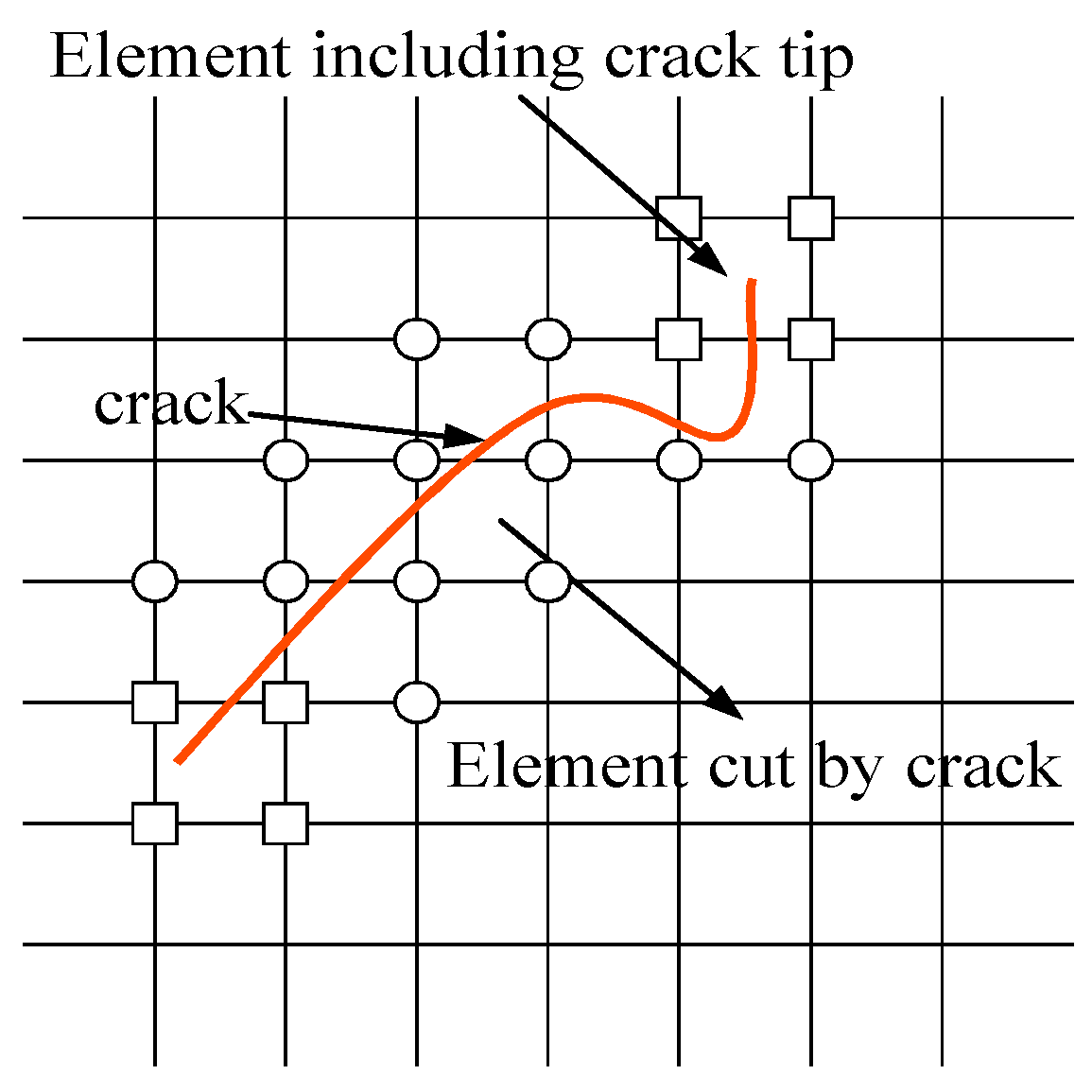
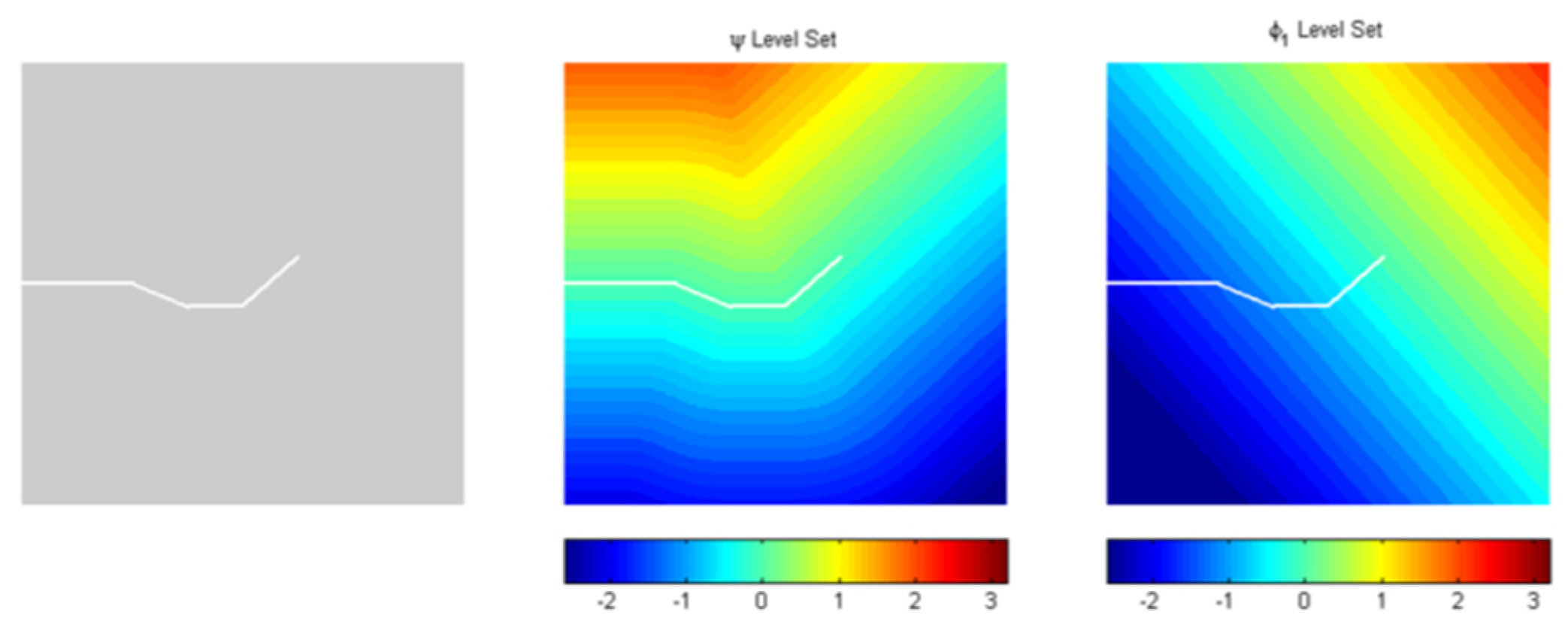
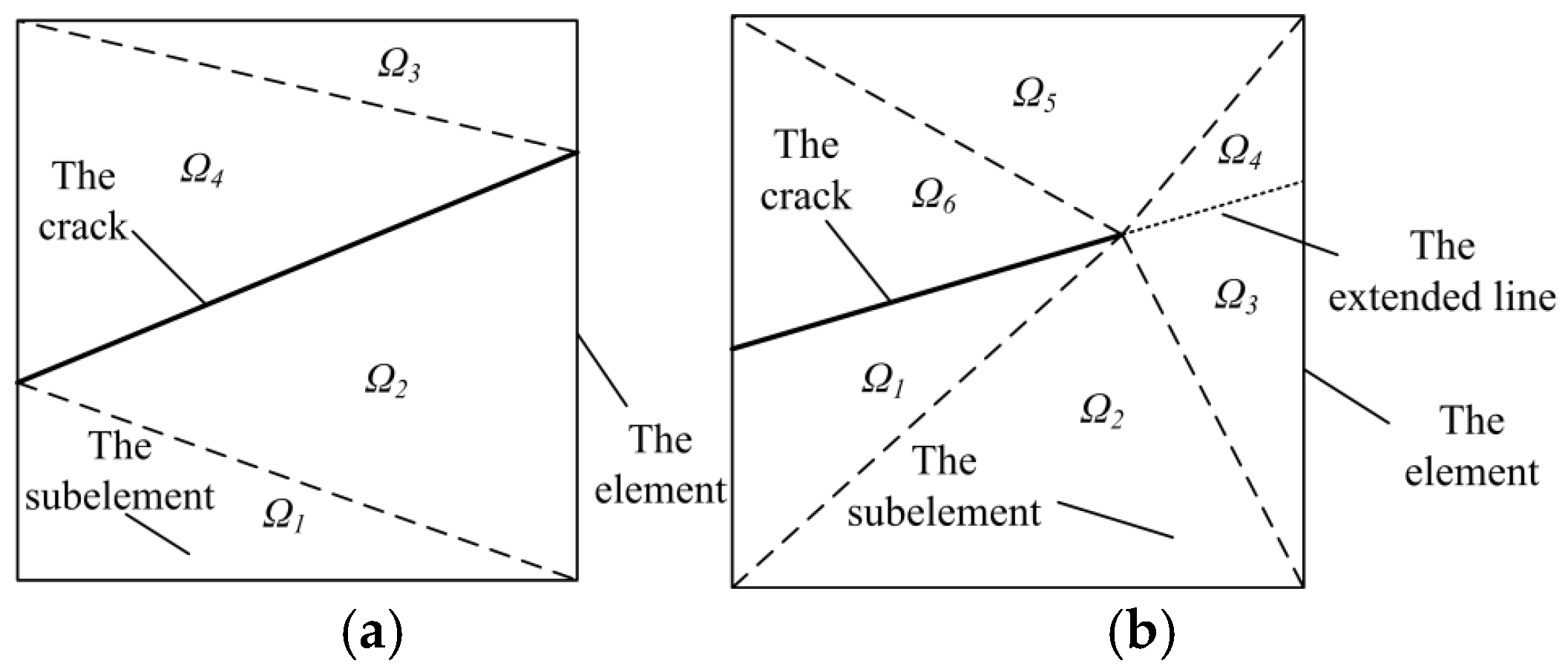

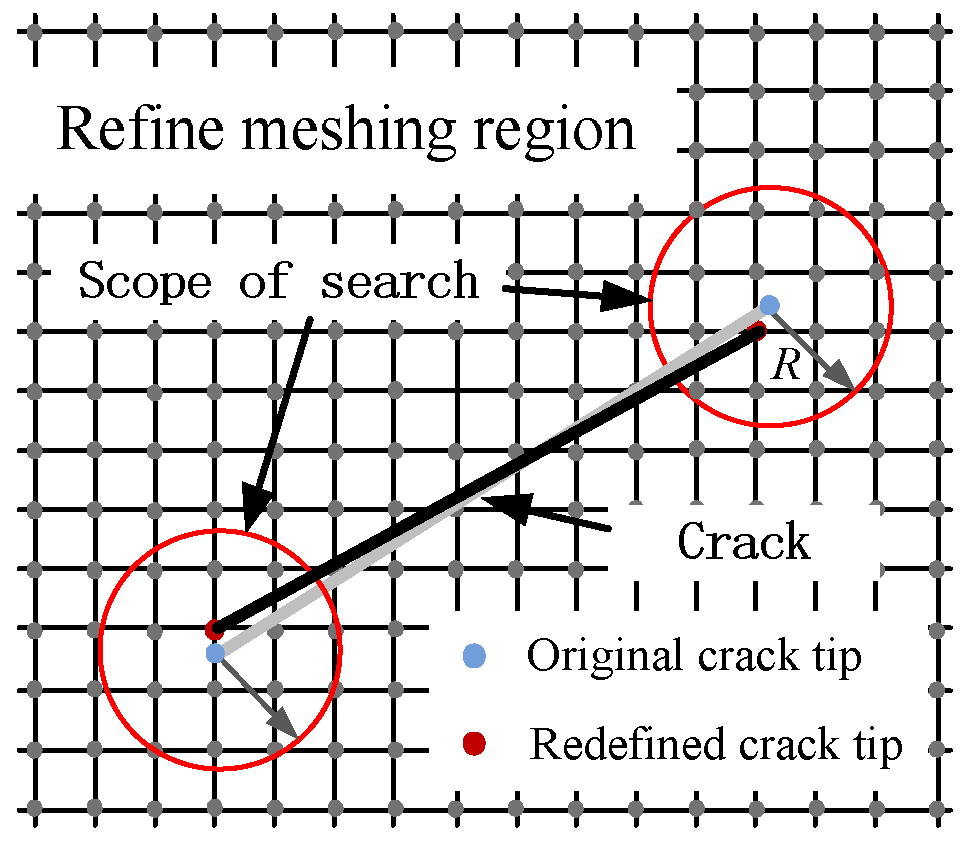
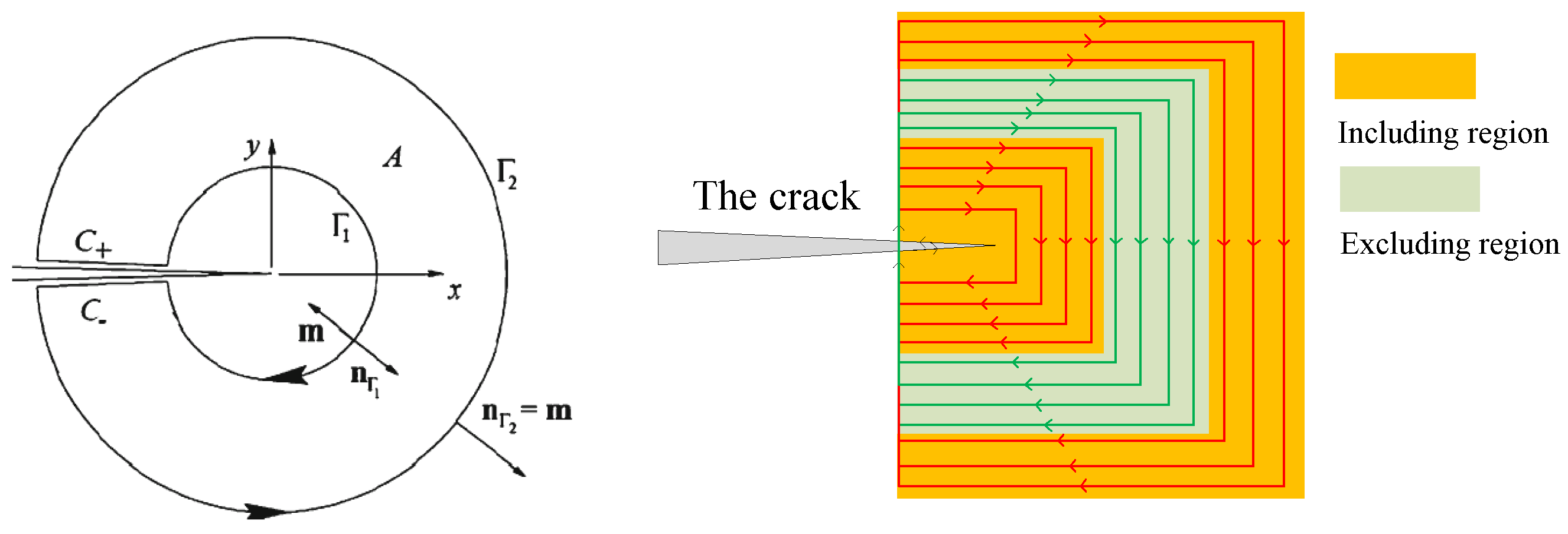
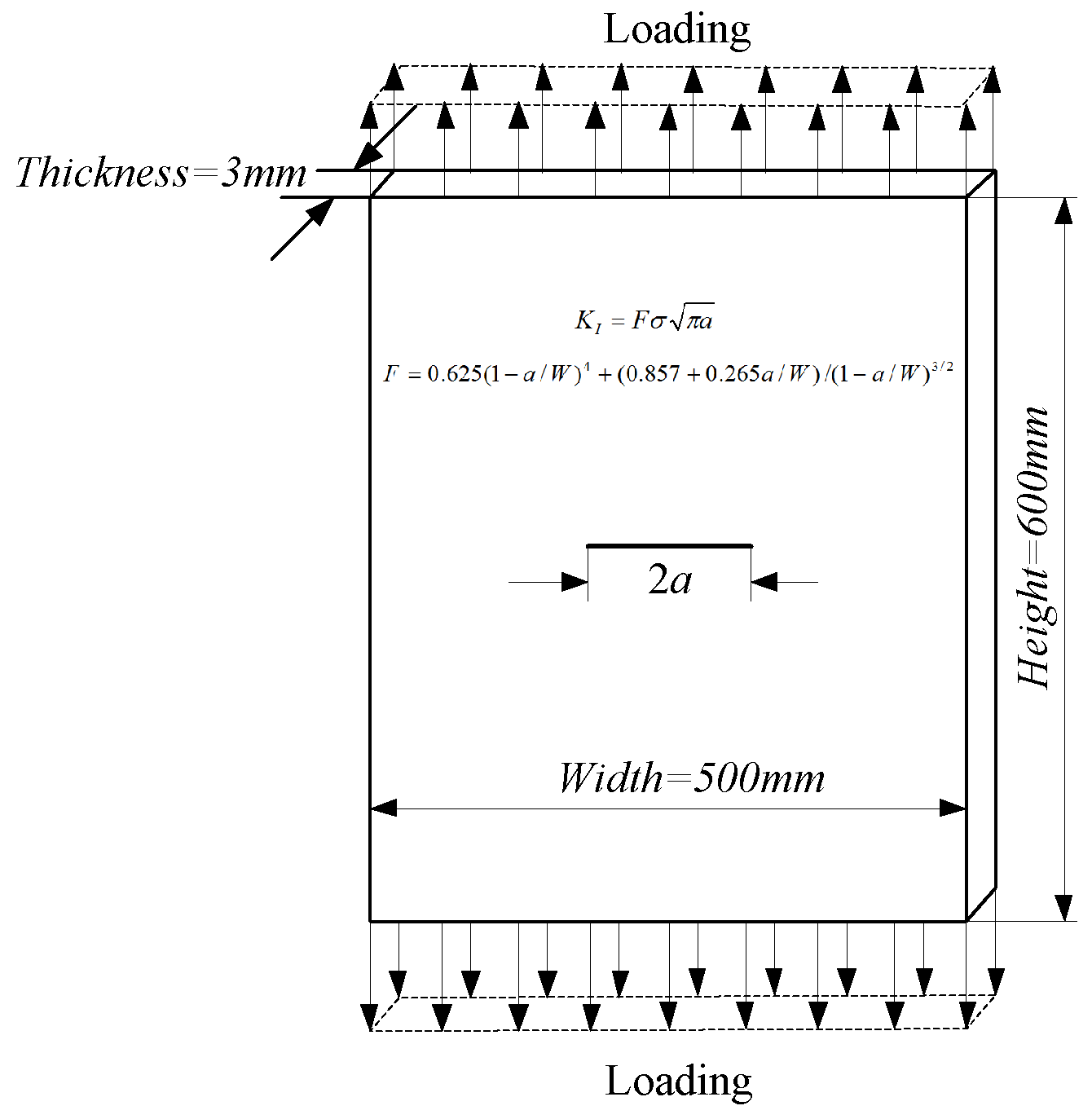
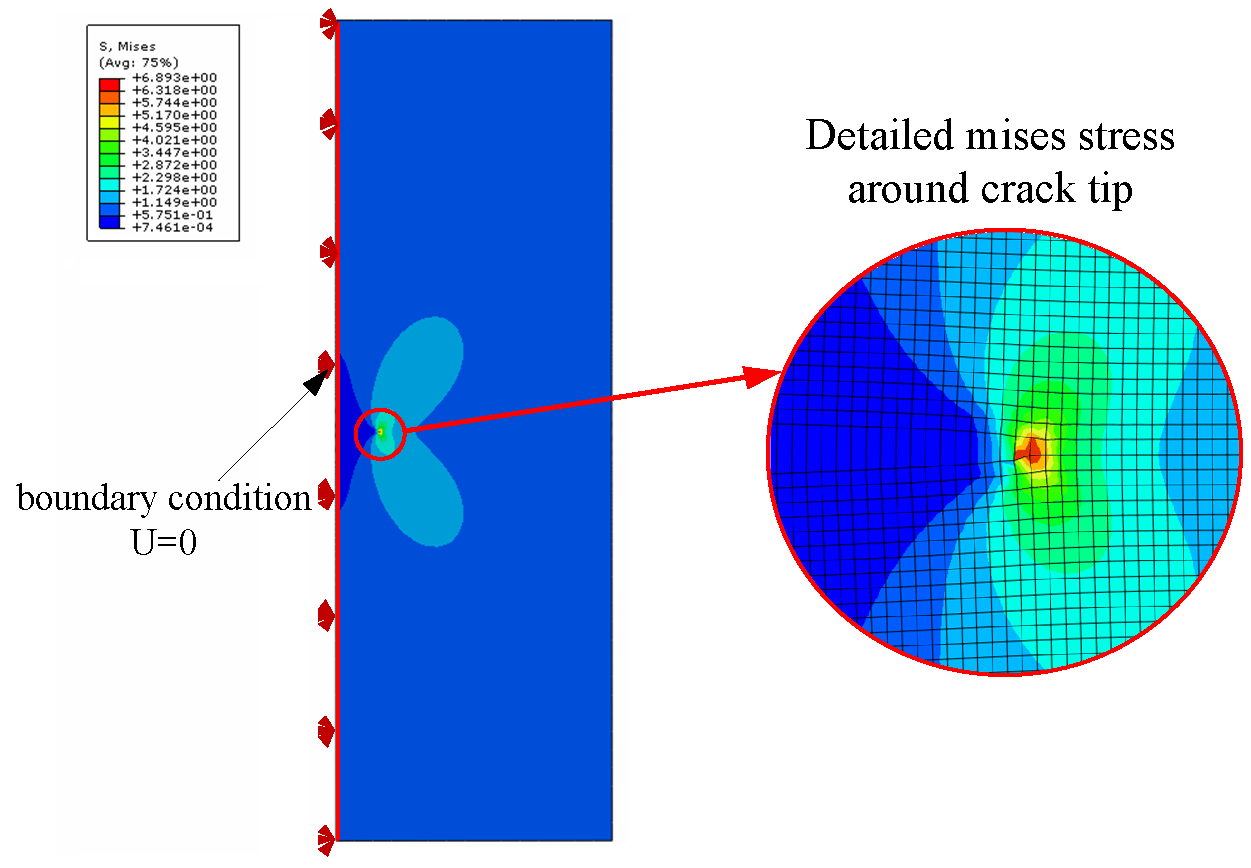
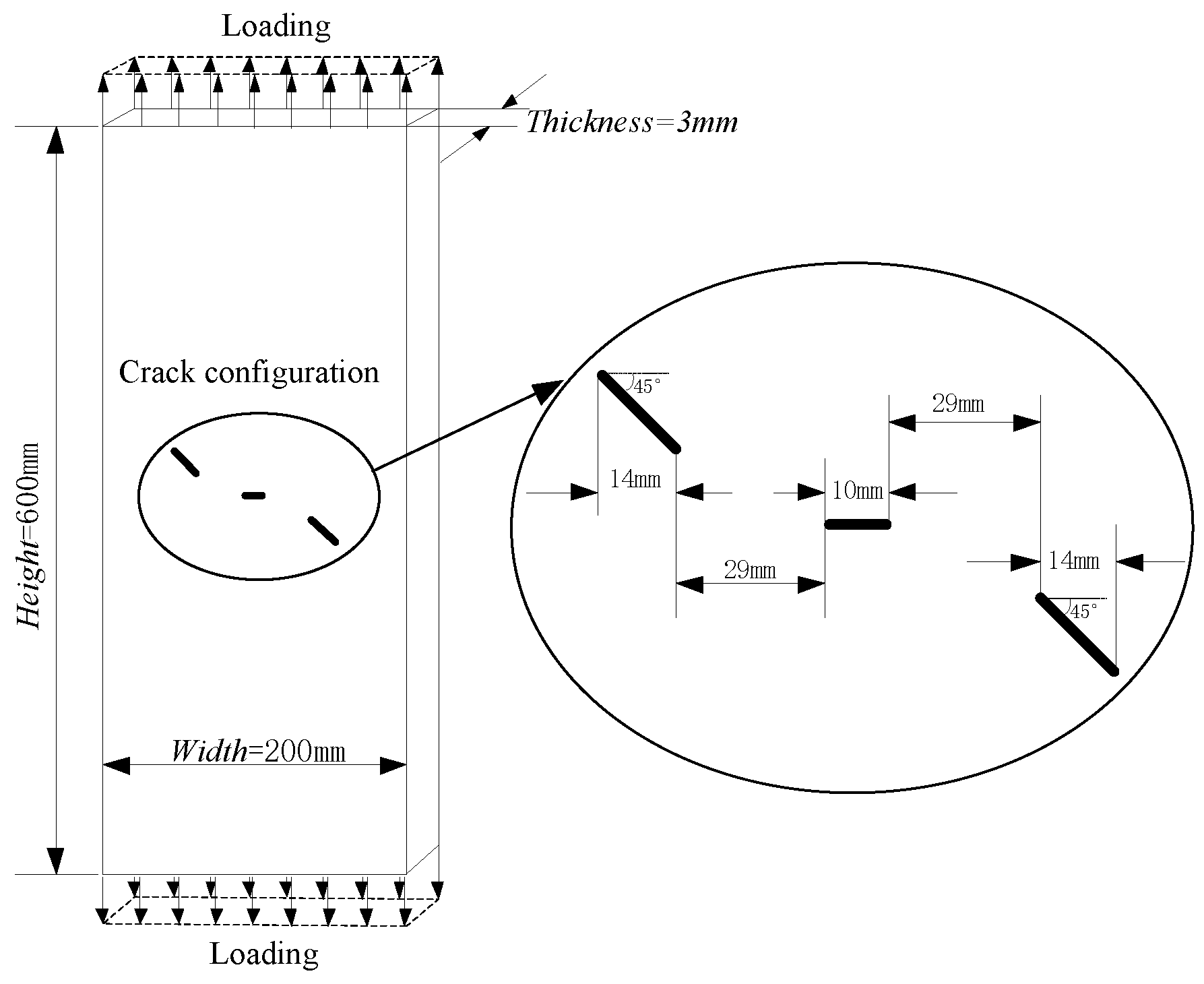
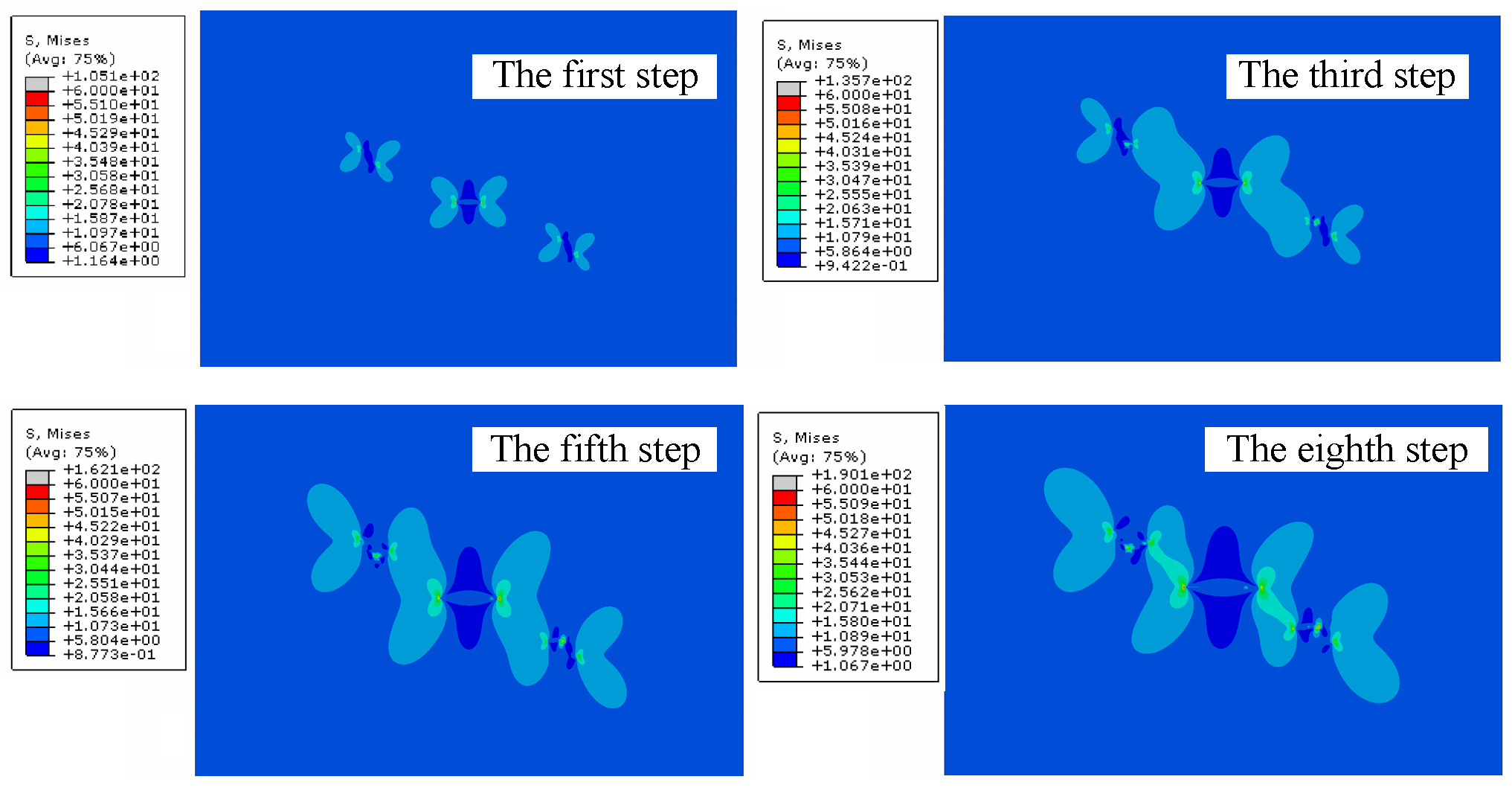
| Crack Length a/mm | The Exact Result KI/MPa·mm0.5 | The XFEM Result KI/MPa·mm0.5 | Relative Error |
|---|---|---|---|
| 30.0 | 12.44 | 12.29 | −1.23% |
| 34.0 | 13.63 | 13.48 | −1.13% |
| 36.0 | 14.23 | 14.11 | −0.81% |
| 40.0 | 15.51 | 15.36 | −0.99% |
| 44.0 | 16.82 | 16.64 | −1.03% |
| 48.0 | 18.20 | 18.06 | −0.74% |
| 50.0 | 18.89 | 18.79 | −0.51% |
| 52.0 | 19.67 | 19.52 | −0.78% |
| 58.0 | 22.03 | 21.94 | −0.44% |
Disclaimer/Publisher’s Note: The statements, opinions and data contained in all publications are solely those of the individual author(s) and contributor(s) and not of MDPI and/or the editor(s). MDPI and/or the editor(s) disclaim responsibility for any injury to people or property resulting from any ideas, methods, instructions or products referred to in the content. |
© 2025 by the authors. Licensee MDPI, Basel, Switzerland. This article is an open access article distributed under the terms and conditions of the Creative Commons Attribution (CC BY) license (https://creativecommons.org/licenses/by/4.0/).
Share and Cite
Zhang, W.; Chen, X.; Yang, J. A Convenient Method for Simulating Crack Propagation in Panel Structures Based on the Secondary Development of ABAQUS. Eng. Proc. 2024, 80, 24. https://doi.org/10.3390/engproc2024080024
Zhang W, Chen X, Yang J. A Convenient Method for Simulating Crack Propagation in Panel Structures Based on the Secondary Development of ABAQUS. Engineering Proceedings. 2024; 80(1):24. https://doi.org/10.3390/engproc2024080024
Chicago/Turabian StyleZhang, Wendong, Xianmin Chen, and Jun Yang. 2024. "A Convenient Method for Simulating Crack Propagation in Panel Structures Based on the Secondary Development of ABAQUS" Engineering Proceedings 80, no. 1: 24. https://doi.org/10.3390/engproc2024080024
APA StyleZhang, W., Chen, X., & Yang, J. (2024). A Convenient Method for Simulating Crack Propagation in Panel Structures Based on the Secondary Development of ABAQUS. Engineering Proceedings, 80(1), 24. https://doi.org/10.3390/engproc2024080024






